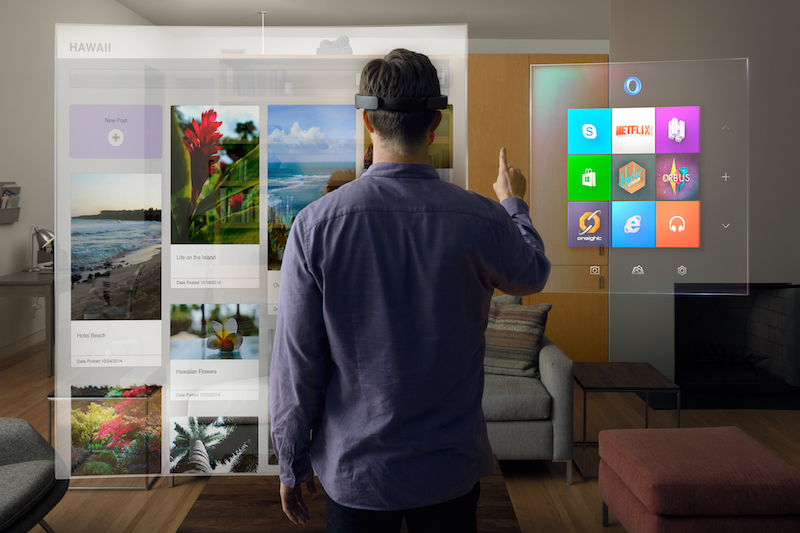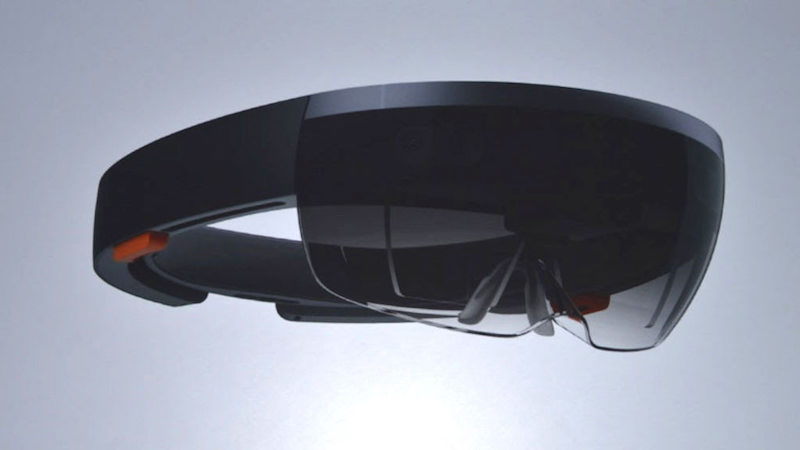Holograms have been a standard trope in the world of science fiction for years. Without holograms, how would Obi-Wan Kenobi have known he was Princess Leia’s only hope? How would Tony Stark have been able to design his Iron Man suits? And how would Minority Report’s John Anderton have been able to efficiently predict crimes without all of those fancy hand movements and holograms? Holograms act as a quick way to let the audience know that the story being told does not necessarily abide by the rules of any world we know.
Unfortunately for writers of fiction, a new shortcut used to let people know they are in a fabricated world is going to be needed because holograms are quickly shedding the fiction aspect of their science fiction title.
The Microsoft HoloLens is a mixed reality, holographic headset that has just recently been released to developers and already has some pretty cool applications planned for it. Chief among them is Skanska’s plan to use the technology to open what will become the “world’s first holographic real estate leasing center,” according to the Daily Journal of Commerce.
Working with Studio 216, one of seven companies chosen to participate in Microsoft’s HoloLens Agency Readiness Program, Skanska created a multi-user, mixed reality holographic tour that allows people to look around and through a new building without having to be isolated from each other, as is currently the case with virtual reality tours, such as those paired with the Oculus Rift.
Mixed reality differs from virtual reality in the sense that, as the name would suggest, it mixes the real world and the virtual world. Physical objects and digital objects are able to interact. For example, while using a HoloLens headset you may look and see a potted plant sitting on a table. The table is real and actually in the room with you, but the plant sitting on top of it is not; the object is completely digital. When it comes to virtual reality, again, as the name suggests, everything you are seeing is a replicated image of somewhere else, be it a real or imagined place.
For Skanska and Studio 216’s tour, the building in question is 2+U, a high-rise office project in downtown Seattle. The structure will offer around 690,000 sf of leasable space and will sit above an “urban village” complete with retail space, bars, restaurants, and other public spaces.
HoloLens will not just allow people to visually tour 2+U, but the auditory senses will be tickled, as well, as these tours will also include sounds of the people and activity occurring in the building’s urban village.
The location of the leasing center has not yet been announced, but it is scheduled to open in June 2016 and Skanska has currently purchased three HoloLens headsets for about $3,000 each. 2+U has a target completion date in early 2019.
 Photo Credit: Microsoft Sweden, flickr Creative Commons
Photo Credit: Microsoft Sweden, flickr Creative Commons
Related Stories
Sports and Recreational Facilities | Jul 15, 2024
Smart stadiums: The future of sports and entertainment venues
These digitally-enhanced and connected spaces are designed to revolutionize the fan experience, enhance safety, and optimize operational efficiency, according to SSR's Will Maxwell, Smart Building Consultant.
Virtual Reality | Jul 8, 2024
Can a VR-enabled AEC firm transform your project?
With the aid of virtual reality and three-dimensional visualization technologies, designers, consultants, and their clients can envision a place as though the project were in a later stage.
Healthcare Facilities | Jun 18, 2024
A healthcare simulation technology consultant can save time, money, and headaches
As the demand for skilled healthcare professionals continues to rise, healthcare simulation is playing an increasingly vital role in the skill development, compliance, and continuing education of the clinical workforce.
K-12 Schools | Apr 29, 2024
Tomorrow's classrooms: Designing schools for the digital age
In a world where technology’s rapid pace has reshaped how we live, work, and communicate, it should be no surprise that it’s also changing the PreK-12 education landscape.
University Buildings | Feb 21, 2024
University design to help meet the demand for health professionals
Virginia Commonwealth University is a Page client, and the Dean of the College of Health Professions took time to talk about a pressing healthcare industry need that schools—and architects—can help address.
AEC Tech | Jan 8, 2024
What's driving the surge of digital transformation in AEC today?
For centuries, the AEC industry has clung to traditional methods and legacy processes—seated patterns that have bred resistance to change. This has made the adoption of new technologies a slow and hesitant process.
Esports Arenas | Oct 10, 2023
Modular esports arena attracts more than gamers
As the esports market continues to grow to unprecedented numbers, more facilities are being developed by universities and real estate firms each year.
Virtual Reality | Jun 16, 2023
Can a VR-enabled AEC Firm transform building projects?
With the aid of virtual reality and 3D visualization technologies, designers, consultants, and their clients can envision a place as though the project were in a later stage.
Office Buildings | Jun 5, 2023
Office design in the era of Gen Z, AI, and the metaverse
HOK workplace and interior design experts Kay Sargent and Tom Polucci share how the hybrid office is evolving in the era of artificial intelligence, Gen Z, and the metaverse.
AEC Tech | May 9, 2023
4 insights on building product manufacturers getting ‘smart’
Overall, half of building product manufacturers plan to invest in one or more areas of technology in the next three years.

















